| July 25, 2017 | Volume 13 Issue 28 |
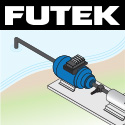 | Desalination System Monitoring
Environmental effects, such as drought, leave many individuals without access to clean drinking water. Desalination aims to solve that by utilizing reverse osmosis to convert seawater into fresh drinking water. These systems need to maintain constant pressure to operate at maximum efficiency. To achieve that, a pressure sensor is used to enable closed loop control on the water pumps.
Click here to learn more about this sensor system setup. |
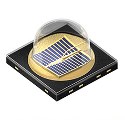 | LEDs with sensors act with swarm-like intelligence
Osram Opto Semiconductors has developed high-power infrared Oslon LEDs (IREDs) that enable lighting installations to act with swarm-like intelligence. These IREDs are employed by the Australian company Organic Response in its technology that allows individual luminaires in large lighting installations to communicate with their immediate neighbors to turn area lights on and off based on occupancy sensing.
Read the full article. |
 | Injection Molding Material Selector!
Proto Labs' pocket-sized Material Selector is a quick reference guide to help you identify the right thermoplastic and liquid silicone rubber materials for your next injection molding project. It lists specific measurements like tensile strength, heat deflection and durometer to ensure you have the most suitable material for your part's application.
Get a free Material Selector today! |
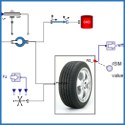 | Engineer's Toolbox:
MapleSim provides new approach to tire modeling
To save time and money in the design and development of new vehicles, automotive manufacturers typically use models to simulate the dynamic relationship between tires and road surfaces. Ideally, a tire model must accurately simulate the dynamics of the system and allow designers to vary its parameters, and simulations must also execute quickly. But existing tire models have inherent drawbacks.
Read the full article. |
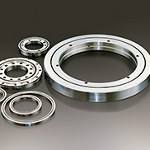 | Cross roller ring can swing the loads
Because it has orthogonally arranged cylindrical rollers, the cross roller ring from THK is a roller bearing with high rotation accuracy capable of bearing loads in every direction. Cylindrical rollers are arranged with each roller perpendicular to the adjacent roller, in a 90-deg V groove, separated from each other by a spacer retainer. This design allows just one bearing to receive loads in all directions including radial, axial, and moment loads. This component is optimal for applications such as joints and swiveling units of industrial robots, swiveling tables of machining centers, rotary units of manipulators, precision rotary tables, medical equipment, measuring instruments, and IC manufacturing machines. Available in several rotation configurations including inner/outer ring, inner ring only, and outer ring only. And now a new micro cross roller ring is perfect to handle smaller applications.
Learn more about THK cross roller rings.
Learn about the new Micro Cross Roller Ring RAU. |
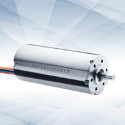 | Mike Likes: Small brushless motor with big performance
The new 3274 BP4 brushless DC motor series from FAULHABER is overload?resistant and operates without wear?prone mechanical commutation, giving the 3274 BP4 longer operational life than conventional micro DC motors. Weighing just under 320 grams, the 3274 BP4 brushless servo motor packs massive continuous torque of 165 mNm, making it ideal for applications where high power and dynamic start/stop operation with the lowest possible weight are crucial.
Click here to learn more. |
 | Stepper or servo motor -- Which should it be?
Bring out the full capacity of your machines through the most efficient mechatronic design. Hurley Gill, Senior Applications/Systems at Kollmorgen, outlines servo and stepper motor baseline capabilities for selection criteria like torque, speed, accuracy, and repeatability. Technical advantages and disadvantages are discussed, helping machine designers select the best motor-drive system for their application.
Click here to read: Servo or Stepper; Which Should It Be?
Kollmorgen designs and manufactures innovative motion control systems, including servo and stepper motors, drives, amplifiers, gearheads, and actuators. |
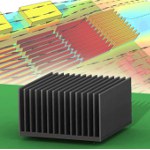 | Everything you wanted to know about heatsinks
How well a heatsink performs depends on particular aspects of its design, such as the thermal conductivity of the material it's made of, its overall dimensions, fin type used, airflow rate, and system. A theoretical model can be used to predict performance, or it can be measured experimentally. But because of the complex 3D nature of today's electronic systems, engineers often use the numerical method via computational fluid dynamics (CFD) to determine the thermal performance of a heatsink before prototyping. This informative blog post from Mentor features two on-demand webinars to run through the basics of heatsink design and considerations.
Read the Mentor blog on heatsink design. |
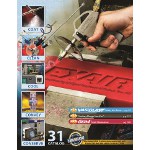 | EXAIR's new Catalog 31 features new safety air guns, static eliminators, atomizing nozzles, air-operated conveyors, and more
EXAIR's new Catalog 31 is a full-color technical guide offering solutions to common industrial conveying, cooling, cleaning, blowoff, drying, coating, and static electricity problems. The greatly expanded Catalog 31 introduces new VariBlast Compact Safety Air Guns, Gen4 Static Eliminators, 1/8 NPT Atomizing Nozzles, Sanitary Flange Air Operated Conveyors, and Digital Flowmeters with wireless capability. EXAIR products help companies conserve compressed air, reduce dangerous noise levels, and eliminate harmful dead-end pressures. Detailed technical explanations, performance data, application photos, and dimensional drawings are provided for each product. A price list is also included.
Request EXAIR's new Catalog 31. |
| | Most popular last issue |
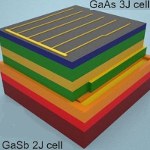 | Scientists design solar cell that pushes toward 50 percent efficiency
Scientists at George Washington University have designed and constructed a prototype for a new solar cell that integrates multiple cells stacked into a single device capable of capturing nearly all of the energy in the solar spectrum. The new design converts direct sunlight to electricity with 44.5 percent efficiency, giving it the potential to become the most efficient solar cell in the world.
Read the full article. |
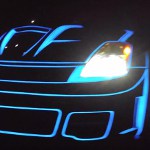 | Electroluminescent paint lights up the design world
It's great to have a really bright idea, but if you have one that can be spread around and lit up it's even better. Case in point is LumiLor, a light-emitting coating system from Darkside Scientific that allows anything coated with it and wired up to be illuminated. Besides providing the technology to create amazing "Tron" cars, the product's creators recently scored Airbus as a customer.
Read the full article. |
 | Army vehicle-mounted laser shoots drones from sky
A Stryker combat vehicle equipped with a 5-kW laser and an array of sensors spent several minutes scanning the horizon for a wayward "enemy" drone. After a few attempts to destroy the drone with the laser, the drone fell from the sky, crashing to the ground. Not a bullet was fired, and no sounds were made by the system that accomplished the kill -- an experimental project called the Mobile High-Energy Laser.
Read the full article. |
|
| | Videos+: Technologies and inspiration in action | NASA posts hundreds of old flight research videos on YouTube
NASA's Armstrong Research Center has been quietly posting hundreds of aerospace test videos from its vast archive to Youtube. They include the spectacular (see the 1984 Dryden/FAA Boeing 720 ground-crash test and resulting fireball explosion) and the more humdrum (Neil Armstrong at the controls of the Lunar Landing Research Vehicle during a training flight). For now, you have to hunt and peck and do a lot of scrolling down to find the good ones (hint: the 720 crash was posted 3 months ago). It is rumored that more than 500 historic video clips will be available to the public all in one place once the total upload is complete.
Peruse the newly released videos. |
 |
Customize a connector for your exact application
Advanced Interconnections Corp. (AIC), a leading designer and manufacturer of interconnect solutions for the global electronics industry, recently published a new video highlighting how to quickly build an application-specific connector with its Build-A-Part tool. The video offers a quick tutorial for using the online product configurator's easy-to-use parametric search menus to build an IC Socket, Adapter, or Board-to-Board Connector part number. In just a few minutes, the video shows how a design engineer or buyer can print a part-specific spec sheet, quickly access a CAD drawing, check stock, or request a quote or sample.
View the video. |
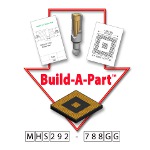 |
|
|